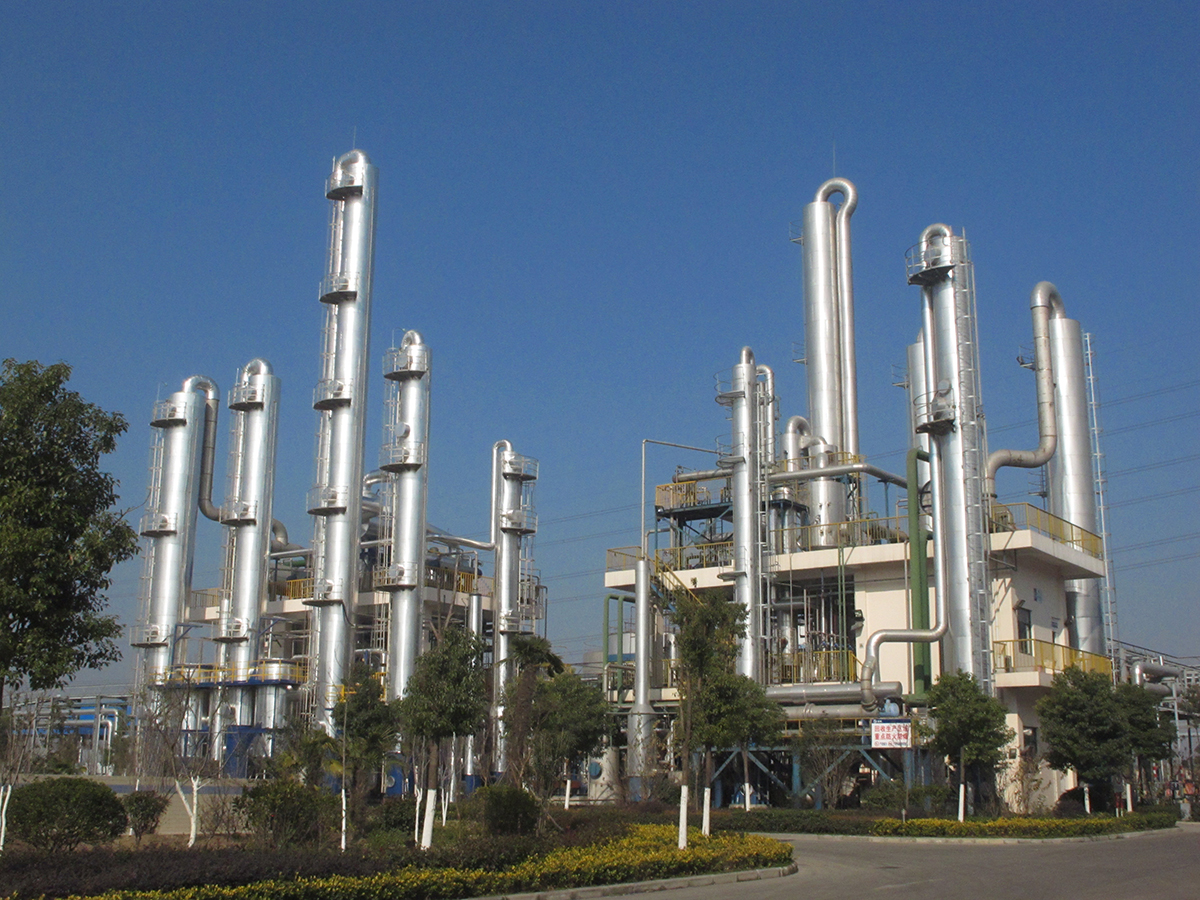Recovering Dimethylformamide (DMF) or Dimethylacetamide (DMAC) from polyurethane (PU) processing is a critical operation for economic and environmental reasons. These solvents are expensive and are often classified as hazardous, making their recovery and reuse a priority.
Here is a comprehensive guide on how to recover DMF and DMAC in PU processing, covering the principles, methods, and key considerations.
The Primary Method: Distillation
The most common and effective method for recovering DMF/DMAC is distillation, specifically thin-film evaporation. This is because the PU solution (often from a coagulation bath or coating line) is typically a complex mixture containing:
- Solvent: DMF or DMAC (the target for recovery).
- Water: From the coagulation bath.
- Polymer: Unreacted PU oligomers, additives, and other non-volatile impurities.
- Salts & Other Contaminants: From production catalysts or other process chemicals.
The high boiling points of DMF (153°C) and DMAC (165°C) make them ideal candidates for separation from water (BP: 100°C) via distillation.
Step-by-Step Recovery Process
A typical industrial recovery system involves the following stages:
1. Pre-Concentration (Flash Evaporation)
- Purpose: To remove the bulk of the water from the dilute solvent-water mixture collected from the coagulation bath. This step significantly reduces the volume of material that needs to be processed in the main, energy-intensive distillation column.
- Process: The waste solution is heated under pressure (to prevent it from boiling) and then flashed into a low-pressure vessel. The sudden pressure drop causes a portion of the water and some solvent to vaporize instantly. This vapor is condensed.
- Output: A pre-concentrated solvent-water mixture (e.g., from 20% DMF to 60-80% DMF).
2. Main Distillation (The Core Step)
This is where the high-purity solvent is separated. Two types of evaporators are predominantly used:
A) Thin-Film Evaporator (TFE) – The Most Common Choice
- Why it’s used: PU solutions are thermally sensitive and can leave behind viscous or solid residues. TFEs are perfect for this.Process: The pre-concentrated solution is fed into the TFE. A rotating wiper blade assembly spreads it into a thin film on the heated wall. The DMF/DMAC vaporizes and is drawn off as overhead vapor. The concentrated polymer “bottom product” (a thick slurry or solid) is continuously discharged.
- Short Residence Time: The liquid is spread into a thin film and moves quickly through the evaporator, minimizing thermal degradation of the PU and the solvent.
- High Heat Transfer: Efficient evaporation.
- Handles High Viscosity: Can process the concentrated polymer solution left after solvent is removed.
B) Falling Film Evaporator
- Used for: Less viscous or pre-filtered streams. It operates similarly but relies on gravity to create the liquid film rather than mechanical wipers. It has a lower risk of mechanical wear but may not handle high polymer concentrations as well as a TFE.
3. Condensation and Collection
- The hot DMF/DMAC vapor from the main distillation column is condensed back into a liquid using a heat exchanger (condenser).
- The resulting liquid is now a high-purity (typically >99.5%) recovered solvent, ready for reuse in the production process.
4. Bottom Product Handling (Polymer Residue)
- The viscous polymer residue from the bottom of the TFE, still containing some trapped solvent (5-15%), needs further treatment.
- A Post-Evaporator (e.g., a List Disc Processor or a Screw Extruder) is often used. This applies high shear and heat under vacuum to “strip” the last remaining traces of solvent from the polymer, maximizing recovery yield.
- The final solid polymer residue is typically disposed of as waste or, in some cases, sent for energy recovery (incineration).
5. Solvent Purification (Fine Distillation)
- Even after the main distillation, the recovered solvent may contain small amounts of water, amines (from DMF decomposition), or other volatile impurities.
- A final fine distillation or rectification column is used to achieve the ultra-high purity required for sensitive PU applications (like synthetic leather). This column separates the light ends (water, amines) and ensures the solvent meets specifications.
Simplified Process Flow Diagram
[Waste Solvent from Coagulation Bath]
[Pre-Concentration Unit] —> (Water Vapor Condensed & Treated)
[Concentrated Solvent-Water-Polymer Mix]
[Thin-Film Evaporator (TFE)]
[Recovered High-Purity DMF/DMAC] –> Back to Process
[Polymer Residue with Trapped Solvent]
[Post-Evaporator (e.g., List Dryer)]
[Additional Recovered Solvent] –> Back to Main Distillation
[Dry Polymer Residue] –> Disposal
Key Considerations for an Efficient Recovery System
- Energy Integration: Recovery is energy-intensive. Modern plants use Multi-Effect Evaporation or Vapor Recompression (MVR) systems to drastically reduce steam consumption. In MVR, the vapor from the evaporator is mechanically compressed, raising its temperature and pressure so it can be used as the heating medium again.
- Solvent Decomposition: DMF and DMAC can decompose at high temperatures, especially in the presence of acids or bases, forming dimethylamine (DMA), which causes an unpleasant odor. Careful control of temperature, pH, and residence time is crucial.
- Corrosion: The presence of water, salts, and possible decomposition products can lead to corrosion. Construction materials like stainless steel (316L) or more exotic alloys are often necessary.
- Environmental Compliance: The vent gases and wastewater streams must be treated. This often involves scrubbers (to capture solvent vapors) and wastewater treatment to remove any traces of solvent before discharge.
- Purity Monitoring: The quality of the recovered solvent must be continuously monitored (e.g., by gas chromatography) to ensure it does not negatively impact the quality of the final PU product.
Summary of Advantages of Recovery
- Economic Savings: Drastically reduces the need for fresh, costly solvent (up to 95-99% recovery rates are achievable).
- Environmental Compliance: Meets stringent regulations on VOC emissions and hazardous waste disposal.
- Reduced Operating Costs: Lowers costs for waste disposal and raw material purchasing.
- Sustainability: Contributes to a circular economy within the production plant.
In conclusion, recovering DMF/DMAC in PU processing is a well-established but technically demanding process centered around thin-film evaporation and distillation. A properly designed and operated recovery plant is not an optional cost but a essential component for a modern, competitive, and environmentally responsible PU manufacturing facility.
Post time: Oct-10-2025

